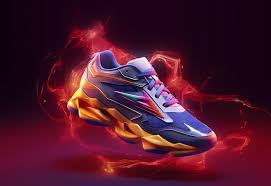Elevate Your Workout Routine with Innovative Footwear Technology
Key Takeaways
- Discover the latest advancements in athletic footwear technology.
- Learn how the right shoes can enhance your workout performance.
- Find tips on choosing the best shoes for your specific fitness needs.
The Role of Footwear in Fitness
Your choice of athletic shoes plays a pivotal role in your overall fitness journey. The connection between shoes and performance is not merely about style or brand prestige; it is fundamentally about functionality and support. Different activities exert different demands on your feet, necessitating footwear matching those demands. For instance, long-distance runners rely on shoes with substantial cushioning to minimize the repetitive impact of each stride. Similarly, a person engaged in interval training or aerobics will benefit from shoes that offer ample lateral support. Correct footwear enhances performance and safeguards against common exercise-related injuries such as sprains or tendonitis.
Adding efficiency to your shoe-shopping routine can be facilitated with resources like Nike promo codes. These options can make accessing high-quality athletic footwear more affordable, opening doors to a range of features that can aid in refining your physical activities. It’s essential to note how critical it is for the shoes to be tailored to specific exercises, ensuring they deliver adequate support and comfort where needed. This kind of investment in the proper footwear is an investment in your health and performance.
Recent Advances in Footwear Technology
Thanks to advances in materials and technology, athletic footwear has undergone significant transformation. Lightweight and breathable materials such as engineered mesh and Flyknit have become popular for offering comfort without sacrificing performance. These modern fabrics conform to the foot’s natural shape while providing excellent ventilation and minimizing friction. Moreover, responsive cushioning, such as foam or air-based systems, absorbs shock and returns energy with every step, minimizing fatigue and enhancing efficiency.
Additionally, the rise of innovative shoe technology brings data-driven insights to athletes. By integrating sensors, shoes can track various metrics like distance, speed, and even posture, providing valuable feedback that can inform training and performance improvements. The more we embrace these modern advancements, the closer we get to a personalized fitness experience that aligns perfectly with our unique body mechanics and fitness goals.
The Science Behind Comfortable and Supportive Shoes
The quest for comfort in athletic footwear isn’t just about subjective feel; it ties back to biomechanics. Proper arch support is crucial for distributing body weight evenly, reducing strain on feet and ankles, and maintaining good posture. A shoe that fits comfortably will hug the foot snugly without being restrictive, reducing the chance of blisters and discomfort during extended wear.
Academic research and field studies have documented that shoe structure has profound implications for foot health and overall bodily mechanics. Athletes can help prevent injuries like plantar fasciitis, Achilles tendonitis, and other common conditions exacerbated by inadequate footwear by choosing shoes that offer the right balance of support and freedom. Such insights underline the importance of investing in quality shoes, the foundation for healthy, active lifestyles.
Choosing the Right Shoes for Your Exercise Regimen
When selecting the perfect pair of athletic shoes, knowledge is power. Following these steps can guide you toward making an informed decision:
- Evaluate the specific requirements of your preferred physical activity. Different sports and exercises exert varying forces on the body, making tailored footwear essential.
- Research particular shoe features that are known to support your chosen activity. For example, runners often look for shoes with excellent cushioning and shock absorption.
- Visit physical stores to test shoes and assess comfort and fit. Consider how the shoe feels during movement and static positions alike.
- To ensure continued support and protection, schedule regular updates to your footwear collection approximately every 300-500 miles of use.
Implementing these practices will improve comfort, enjoyment during workouts, performance, and longevity in your fitness pursuits.
Expert Opinions on Footwear Technology
Sports science and podiatry experts agree that seemingly minor innovations in footwear technology can significantly impact exercise efficiency. Features like improved sole grip, moisture-wicking capabilities, and temperature control contribute broadly to shoes’ functionality and comfort.
Such enhancements are exceptionally vital for athletes whose performance directly correlates with the gear they use. Even casual fitness enthusiasts benefit from shoes that align with the foot’s natural movement and provide support on various surfaces. Expert recommendations reinforce the notion that carefully chosen athletic shoes serve as essential tools for exercise, enhancing both safety and efficacy in physical activity.
How Footwear Affects the Environment
Footwear production traditionally involves significant resource use and can have a notable environmental impact. Recognizing this issue, some brands are pivoting towards more sustainable manufacturing processes, utilizing recycled materials and eco-friendly practices. Consumers can participate by supporting brands that prioritize such sustainability efforts, thereby reducing the environmental footprint of their wardrobe choices.
Choosing shoes with sustainable credentials, such as those highlighted in guides on sustainable shoe production, denotes a step towards more responsible consumer behavior. This conscious approach benefits the environment and encourages the industry to innovate and prioritize the health of our planet.
The Future of Athletic Footwear
Looking ahead, the future of athletic footwear is poised for exciting developments. With the potential of 3D printing, consumers will soon enjoy personalized shoe designs that cater specifically to individual foot dimensions and preferences. Integrating more sophisticated data-collection tools promises to deliver hyper-tailored feedback, transforming how we approach training and recovery.
Also read: Learning Environment
As the industry evolves, the expectation for higher sustainability standards will become the norm. As consumers, staying informed about these trends equips us to make choices that enhance our health while supporting broader environmental and ethical goals. The journey of athletic footwear from simple utility to a fusion of fashion, function, and sustainability embodies a promising path forward for both athletes and brands alike.







